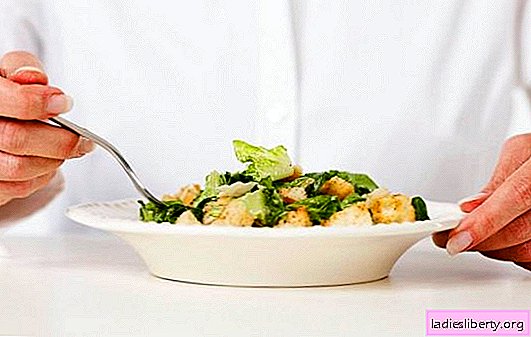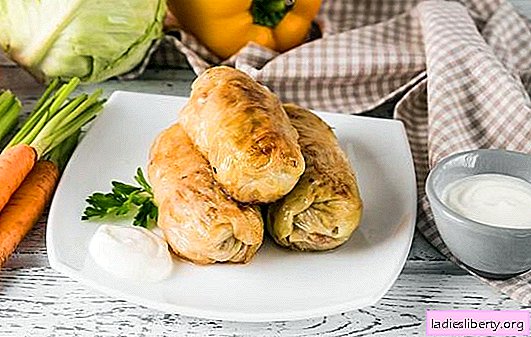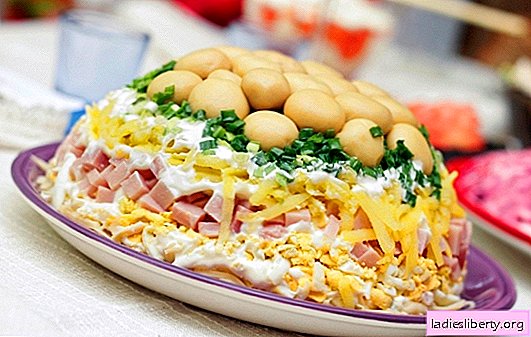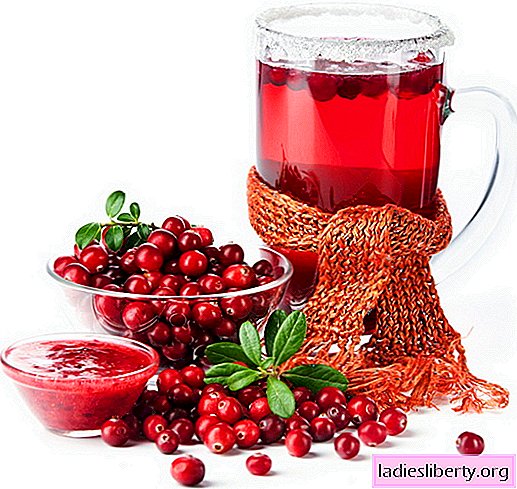
A patient who has undergone gallbladder removal throughout his subsequent life needs to follow a diet, because he no longer has an organ in which bile has previously accumulated. The main objective of this diet is to ensure that bile does not stagnate in the bile ducts. This article will talk about such a diet.
Diet after removal of the gallbladder: what can
After this operation, a person can eat such foods and dishes:
1. Vegetables. Of these, it is better to give preference to carrots, zucchini, mashed potatoes, pumpkin and beets in boiled form. It is also very useful to cook casseroles and stews from vegetables (only without tomatoes).
2. You can eat eggs, but only in boiled form (soft-boiled). No more than twice a week you can eat a steam protein omelet.
3. Most fats in this diet are strictly prohibited, but you can’t do without them completely. For this reason, the menu must necessarily contain vegetable fats and butter in limited quantities (30 g).
4. Bread can be eaten with bran. Moreover, it should be dried or yesterday's freshness.
5. Light desserts are allowed from sweets - jelly, marshmallows, marmalade, honey, jam. All this can be eaten, but only in very small quantities.
6. From drinks it is allowed to use light green and white tea, a decoction of dried fruits, a decoction of wild rose, compote and fruit jelly. It is advisable that the drinks do not contain sugar. As for juices, they can also be consumed, but they should not be acidic. Also, juices should be diluted slightly with water.
7. Of the fruits allowed melons, watermelons and apples in baked form. It is better to refuse sour berries and fruits.
8. It is allowed to use herring, which must first be soaked.
9. You can eat milk porridge, if they will not cause indigestion.
10. All fermented milk products are very useful - cottage cheese, fermented baked milk, kefir. The main thing is that they are fat-free.
11. From seasonings, you can use bay leaf, parsley, dill, turmeric, cinnamon.
12. From meat it is advisable to choose low-fat dietary varieties - turkey, rabbit, chicken.
Diet after removal of the gallbladder: what you can not eat
After this surgery, a person should abandon the use of such foods and dishes:
1. Sweet carbonated drinks.
2. Products that irritate the intestinal mucosa (garlic, horseradish, radish).
3. Spicy spices and sauces (mayonnaise, ketchup, mustard).
4. Fatty fish.
5. Fatty meat (goose, duck, pork).
6. Sour fruits and berries (lemons, tangerines, pineapples, oranges, etc.).
7. Fish and meat rich broths.
8. Almost all sweet confectionery. This includes the use of chocolate, sweets, ice cream, cakes, pastries and other sweets.
9. Mushrooms and dishes with their addition should not be eaten because they greatly complicate the process of digesting food. For the same reason, after removing the gallbladder, a person is not recommended to eat legumes (peas, beans).
10. All kinds of pickles and preservation.
11. Smoked meats and sausages.
12. Canned fish.
13. Fats contained in fried foods, as well as products of animal origin (lard, fatty meat, sausages, etc.).
14. You can not eat white cabbage, especially in pickled form, since it causes fermentation in the stomach.
15. All kinds of convenience foods and fast food.
16. A very strict ban on all alcoholic beverages. They can not be used in any form and quantity.
Diet after gallbladder removal: weekly menu
Consider an example of a weekly menu that must be observed after undergoing a similar operation. All dishes, if desired, can be interchanged and supplemented with other diet recipes to diversify the diet.
Monday:
1. Breakfast includes cottage cheese casserole with apples and nuts. From drinks tea suitable without sugar with milk.
2. For a second breakfast, prepare a glass of kefir and biscuit cookies.
3. For lunch you can serve borsch with sour cream, mashed potatoes and boiled chicken. From drinks - compote from berries.
4. Afternoon snack - dried fruits and fermented baked milk.
5. For dinner, you can cook baked fish with vegetables and beetroot salad with vegetable oil. From drinks - a rosehip broth.
6. Before going to bed for a second dinner, you should drink warm milk.
Tuesday:
1. For breakfast, serve two boiled eggs and buckwheat porridge. From drinks, fruit jelly is suitable.
2. Second breakfast - fruit salad.
3. For lunch, you should cook rice porridge, vegetable stew from zucchini and chicken meatballs. From drinks you can serve yogurt or fermented baked milk.
4. Afternoon snack - hard cheese and a decoction of dried fruits.
5. Dinner - vegetable soup puree, steamed fish cakes, beetroot salad.
6. Before going to bed, you can eat milk porridge or pumpkin pudding.
Wednesday:
1. For breakfast - oatmeal soup with potatoes, bread with bran, baked apple, tea.
2. Second breakfast - yogurt with fruits.
3. For lunch, you can cook stewed rabbit with potatoes and stew from the zucchini. From drinks, compote is suitable.
4. Snack - cottage cheese soufflé, juice.
5. For dinner, you should cook buckwheat porridge and boiled chicken meat with milk sauce.
6. Before going to bed, you need to drink a glass of kefir or yogurt.
Thursday:
1. Breakfast - oatmeal with milk, cheesecakes, tea.
2. Lunch - casserole and apple with honey and nuts.
3. For lunch you can cook borsch, fish cakes and rice porridge. From drinks, a decoction of dried fruits is suitable.
4. Afternoon snack - baked pumpkin, dried fruits.
5. For dinner, you can cook steamed cabbage, mashed potatoes and beetroot salad.
6. Before going to bed, drink pumpkin and carrot juice.
Friday:
1. For breakfast, serve meatball soup and green tea.
2. Lunch - yogurt and baked apples.
3. For lunch, cook soaked herring with dill, stewed potatoes and hard cheese. From drinks you can fruit juice.
4. Snack - cottage cheese souffle, jelly, compote.
5. For dinner, you should serve baked fish with vegetables. On the second - milk soup and a rosehip broth.
6. Before going to bed, drink milk with honey.
Saturday:
1. Serve pumpkin soup with milk sauce for breakfast. Of the drinks, carrot-apple juice is suitable.
2. Second breakfast - yogurt, nuts.
3. For lunch, serve pearl barley porridge with stewed beef, carrots and onions. You can also have mint tea.
4. Afternoon snack - milk soup with vermicelli, green tea.
5. For dinner, you can cook stewed rabbit with mashed potatoes, boiled beets and eggs. From drinks, you can take dried fruit compote or tea.
6. Before going to bed, drink chamomile tea.
Sunday:
1. For breakfast, cook oatmeal with nuts and fruits, yogurt.
2. Afternoon snack - banana and baked apples.
3. For lunch, serve vegetable soup, mashed rice, porridge and chicken roll with vegetables. Prepare milk mousse from drinks.
4. Snack - cottage cheese souffle, marshmallows, compote.
5. For dinner, serve steam chicken cutlets, buckwheat porridge and vegetable salad with herbs. From drinks - fruit jelly.
Diet after gallbladder removal: nutrition principles
The following recommended principles of nutrition after this surgical intervention are distinguished:
1. To prepare the first liquid dishes, you need to use vegetable (non-meat) broths. They are also allowed to add cereals - buckwheat, rice, oatmeal.
2. At least twice a week, a person needs to eat fish after removing the gallbladder. It should be not fatty varieties and served in boiled form. Marine fish species are especially useful.
3. For breakfast, it is best to serve cottage cheese dishes - all kinds of casseroles, puddings, cottage cheese with sour cream and fruits.
4. Servings should not be large - the size of a handful of the patient.
5. The frequency of food intake is determined individually by the doctor. Usually, a person is shown fractional nutrition, that is, you need to eat at least five times a day. Thus, you can stay full, but at the same time, do not overload the stomach.
6. It is advisable not to focus on a uniform diet. The menu should be rich in various dishes. Fortunately, today a dietary table provides an opportunity for a wide selection.
7. All foods for dishes should be fully cooked (there should be no half-baked foods).
8. A person needs to drink at least two liters of pure water without gas per day, not counting the liquid from soups and juices. It is also useful for the patient to drink mineral water.
9. The last meal should not be later than two hours before bedtime. Night meals are prohibited.
10. Vitamin preparations can be taken, but only after a meal. They should be prescribed by the attending physician.
11. All dishes should be boiled, baked or steamed. Other methods of heat treatment (frying) are not welcome.
12. It is advisable to use dishes with a liquid consistency (mashed potatoes). Thus, it will be easier for the stomach to digest them.
13. Do not drink the liquid immediately after taking the main dishes. You need to wait about half an hour and only after that drink juice or compote.
14. Sour fruits should not be eaten raw. It is better to cook compote or jelly from them. So they will lose part of their acidity and will be easier to digest, without irritating the intestinal wall.
15. Do not combine indigestible products at one meal: fish and meat, liver and cheeses, legumes and cereals. So you can avoid overloading the stomach and simplify the process of digesting food.
16. In the first days after surgery, the menu should consist mainly of vegetable seers, mashed potatoes, as they are the easiest to digest.
17. Dried fruits are best eaten after they have been steamed with boiling water. So they are easier to digest.











